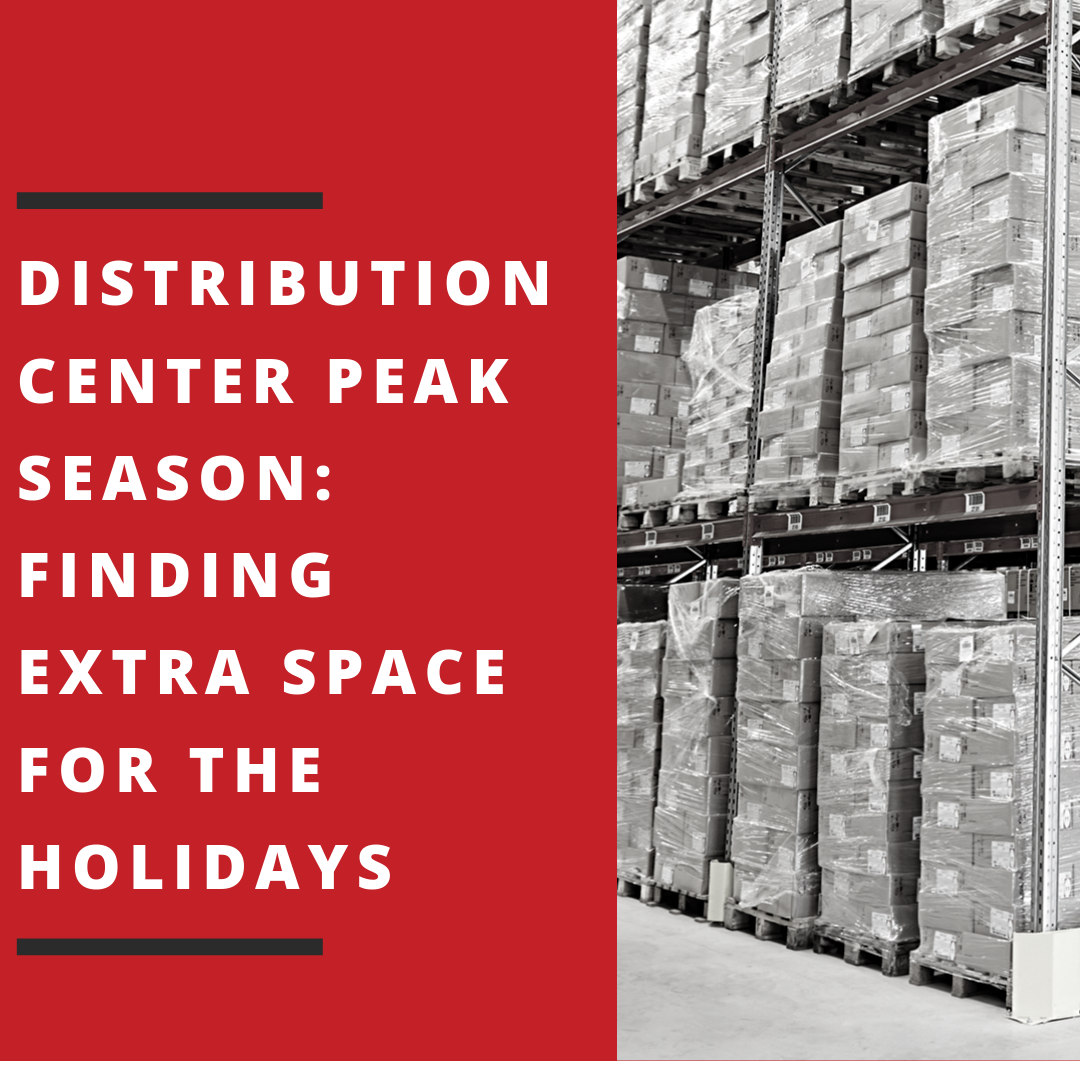We use cookies to make your experience better. To comply with the new e-Privacy directive, we need to ask for your consent to set the cookies. Learn more.
Distribution Center Peak Season: Finding Extra Space for the Holidays

As the online retail season winds toward its busiest weeks, managers of distribution centers across the world are facing a familiar problem: Facilities that operate just fine throughout the year must suddenly handle drastically increasing throughput.
If physical space requirements can be measured by the value of holiday season e-commerce sales, that challenge is likely to intensify in 2019. Holiday season e-commerce sales have leaped upward every year for the past five, growing from $70.4 billion in 2014 to $123.29 billion in 2018.
Assuming most facilities can’t rapidly expand, there are still a few ways to squeeze more usable square footage out of a distribution center. For instance:
Add shelving outside traditional aisles.
When DC managers look around their facilities, they’ll see tons of empty space: Spaces above doorways, unutilized vertical space, potential staging zones in the shipping room. Pallet racks might not fit everywhere, but why should we restrict ourselves to one type of racking?
The addition of nonstandard shelving — Single Tier Industrial Shelves, multi-tier Industrial Shelving, or even specialized storage, like Vertical Material Racks — all these things can help store the extra product that comes along with the peak season.
Of course, assuming the walls and empty spaces are all bristling with shelves, there still remains the problem of which items to place where. For that, we turn to a classic formula in the warehousing business.
Use the Pareto principle to greatest advantage.
Most warehouse managers are familiar with the Pareto principle, or the 80/20 Rule, as it relates to distribution centers. That is, 80 percent of the facility’s time is spent handling 20 percent of the product. That crucial 20 percent? That should be placed in the most accessible areas closest to packing stations.
It’s also possible to further extrapolate the 80/20 Rule, as Susan Comfort did, writing in the industry publication Plant Engineering.
“The next 15 percent of the activity [in a warehouse] comes from 30 percent of the items, which are the medium-movers,” Comfort wrote. “Finally, 5 percent of warehouse activity comes from 50 percent of the items, which are the slow-movers.”
Once non-standard shelving units are in place everywhere possible, these numbers provide a rough guide to what should go where. Medium-movers can go into deeper storage, further down the racks, or even in rotating or sliding storage units. Slow movers can wait around furthest away from packing stations; these longer trips are rare, anyway.
With the addition of non-standard shelving units and a great plan for using them, distribution centers can sail through peak season even as the industry grows and changes. Of course, eventually we’ll all have to build new facilities to keep up with the growth of e-commerce...but for now, that’s a challenge for another day.
References:
Comfort, Susan. “Warehouse and distribution center managers constantly face the challenge to efficiently utilize space – and therefore reduce costs – while selecting material handling solutions that are specific to their applications and needs.” PlantEngineering. CFE Media, 15 Dec. 2010. Web. 25 Sept. 2019.
Perry, Lance. “Warehouse Ergonomics: The Vital Few Versus the Trivial Many.” IndustryWeek. Informa, 2 Jul. 2013. Web. 25 Sept. 2019.
“U.S. retail e-commerce holiday season sales from 2014 to 2018 (in billion U.S. dollars).” Statista. Statista 2019, Web. 25 Sept. 2019.
